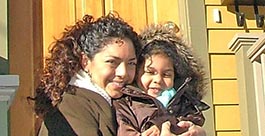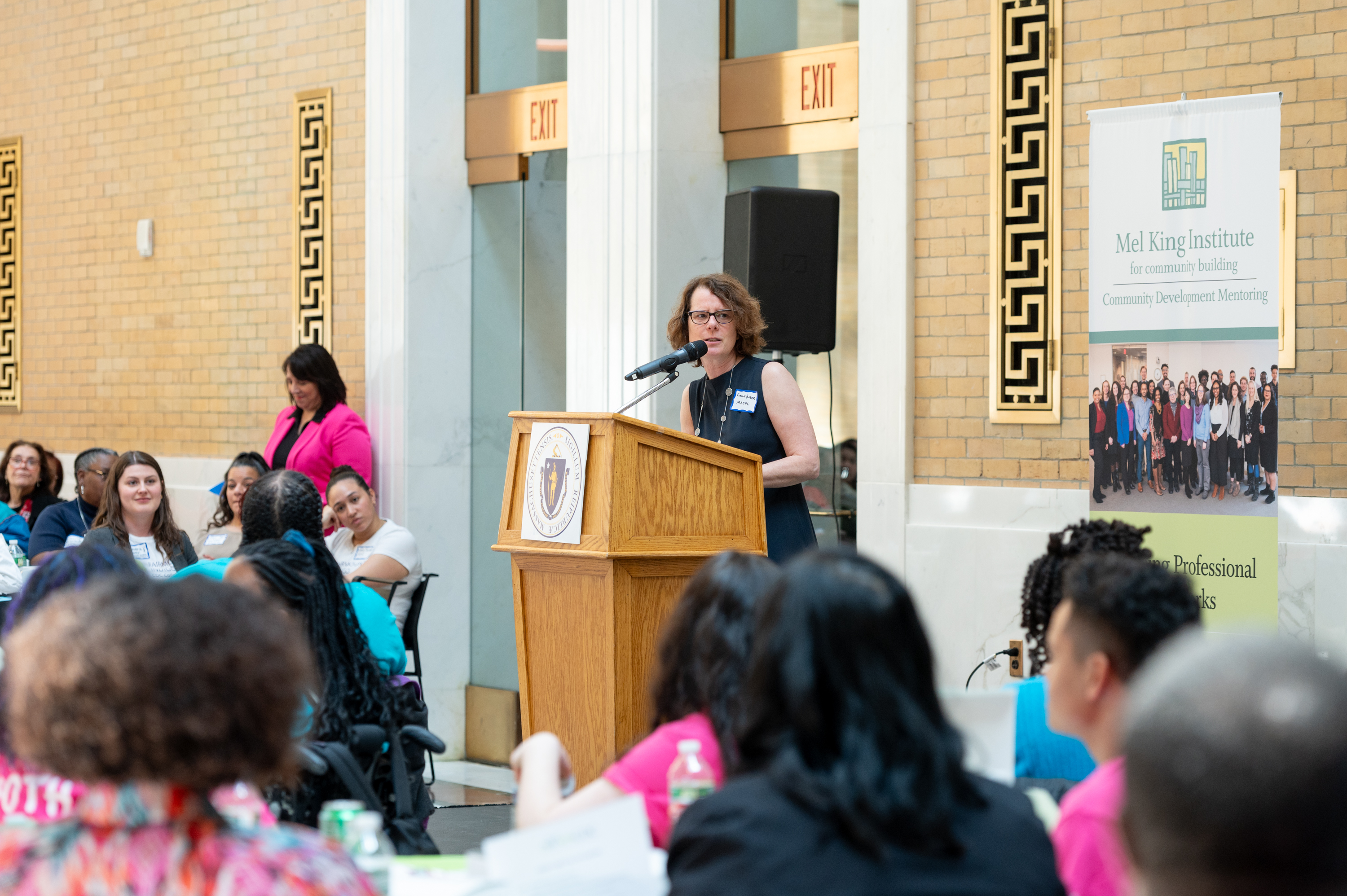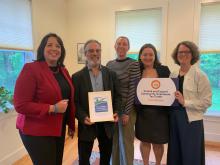A conversation between Kris Anderson and Kavya Sekar.
1. How did you and Fenway CDC get involved with Boston Children’s Hospital?
Boston Children’s asked FCDC to serve on a community advisory board to help advise the hospital on its efforts to improve the health and well-being of families in the Fenway neighborhood, especially low-income and minority families which are most impacted by health and healthcare inequities.
2. What assets do you bring to the board coming from a Community Development Corporation?
From my many years as an employment specialist, case manager and counselor and through my work with the Fenway Family Coalition, I bring a detailed understanding of both the strengths and needs of Fenway families as well as the ability and credibility to advocate on behalf of those families.
a. What other kinds of organizations are on the advisory board and how do you all work together? What assets do the different types of organizations bring to the table?
Other members of the CAB include representatives of the Mayor’s Office, Boston Public Health Commission (BPHC), Boston Public Schools (BPS), Mission Hill Neighborhood Housing Services, Jamaica Plain Coalition, Smart from the Start, Sociedad Latina, Roxbury Boys and Girls Club and the South End Community Health Center, as well as unaffiliated residents of Fenway, Mission Hill, Jamaica Plan and Roxbury. All of the community-based CAB members were asked to join because of their knowledge of and ability to advocate for their community, so there is a great deal of camaraderie and a sense of common purpose. The city agencies on the CAB include the major child-service organization in the city, BPS, and the City’s public health organization, BPHC, both of which have a detailed understanding of the strengths and gaps in services for children and families as well as the policies that impact children and families. The community-based representatives work well with the city agency representatives and see our work together as an opportunity to leverage their resources and clout to improve the quality of life in the neighborhoods surrounding the hospital.
b. How do the different types of organizations on the board come into agreement for how to best promote health in the community?
CAB members play an active role in developing the hospital’s triennial community needs assessment, which is intended to identify the most pressing community health needs. CAB members do so by advising the hospital directly and by coordinating focus groups to enable the hospital to hear directly from the families that the needs assessment is designed to serve. Decision-making within the CAB about how to prioritize community health investments is done through consensus, which has worked well and reflects our common interest.
3. For Fenway CDC, what is the relationship between community development and health? How does the Community Health Initiative fit into your mission as an organization?
Six years ago, through the Binney St. Community Health Initiative, Boston Children’s’ and FCDC agreed to provide funding for my position and to expand my responsibilities to include advising families living in FCDC- managed housing on eligibility for and accessing of government benefits, social services, health insurance and healthcare, in addition to employment counseling. The role, now referred to as Director of Community Programs also works in the capacity of a Resident Services Manager, which is closer to a traditional Community Health Worker role in that I connect families with medical, social, government and employment services that promote their overall health and well-being. I also coordinate educational workshops that bring Boston Children’s experts into the community to provide parents with information on everything from managing their child’s asthma to parenting a teen. In addition, I, along with my CAB colleagues, have spent the past year advocating with and educating the hospital about the need to address affordable housing as a public health issue. This has resulted in the hospital joining a broad-based coalition that is advocating for legislative changes that will address children’s health, hunger and homelessness. It has also resulted in Boston Children’s forming a collaboration with Massachusetts Law Reform Institute and Horizons for Homeless Children to better identify and connect homeless patient families with the services and resources they need to stabilize their lives and maintain their health. In addition, Boston Children’s recently entered into an unprecedented agreement with Mission Hill Neighborhood Housing Services to provide Housing Creation Linkage funds for a 45-unit affordable family housing development before the Boston Children’s project that would generate the Housing Linkage has received all the necessary State approvals, placing the funds 100% at-risk. So, in addition to expanding the range and quality of services available to FCDC resident families, this partnership fits into FCDC’s mission as an advocate for increasing and diversifying the resources available for affordable housing.
a. Does your work on community health precede the relationship with Children’s- if so, how? What were you doing before to connect community development to health?
FCDC’s partnership with Boston Children’s has helped us to recognize that health doesn’t begin in the doctor’s office or the hospital, but in the homes, schools, neighborhoods and workplaces. Using that definition, I’ve been working to improve community health for a number of years by coordinating the Walk to Work Program, a partnership with the Longwood Medical Area hospitals to train and employ community residents for careers in the health sector.
4. What programs at Fenway CDC have resulted from your involvement in the community health initiative? How has being involved with Children’s shaped your organization’s work?
Participation in the Community Health Initiative has resulted in a 50% increase in Fenway Family Coalition membership, in part, through additional offerings such as Fenway CDC’s first health fair and through hospital-supported workshops on asthma, nutrition, infant health, adolescent health, mental health, smoking cessation, Weight Watchers, CPR and Zumba. In addition, we’ve established a walking club, which, among other things, is promoting an increased sense of community among residents.
5. What advice do you have for other CDCs for working with hospitals on community health initiatives and serving on advisory boards for hospital community programs?
One major way that healthcare institutions/organizations can play a part in community development activities beyond their traditional role of providing health care services is by supporting asset-building programs and affordable housing initiatives. These are areas where healthcare organizations are involved in direct community development activities. Of course, when forming an advisory board, you need to understand its purpose, but you also need to know what specific skills to seek. My advice in working with hospitals on community health initiatives and serving on advisory boards for hospital community programs would be to look for individuals with diverse skills, expertise and experience. You want members to be problem-solvers who are quick studies, have strong communications skills and are open minded. Getting a heavyweight on your Advisory Board can be a big bonus and will give you credibility, but not always. It’s also important to have members who are going to spend the time to give you thoughtful and candid advice, who represent and reflect the community, are well-connected and willing to make introductions to community members who are in the trenches doing the grassroots organizing and outreach for those community residents who are in dire need of our resources the most.









